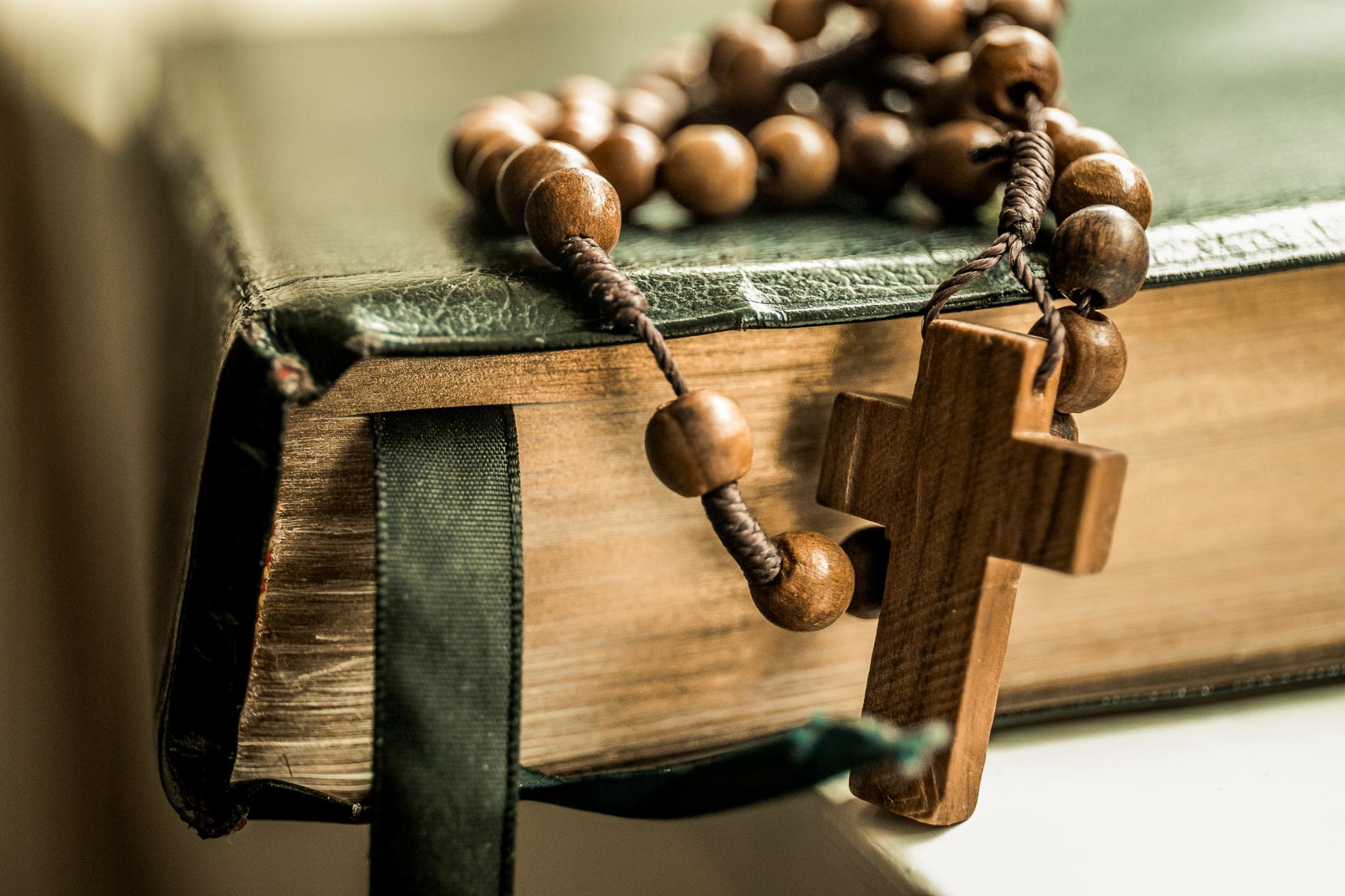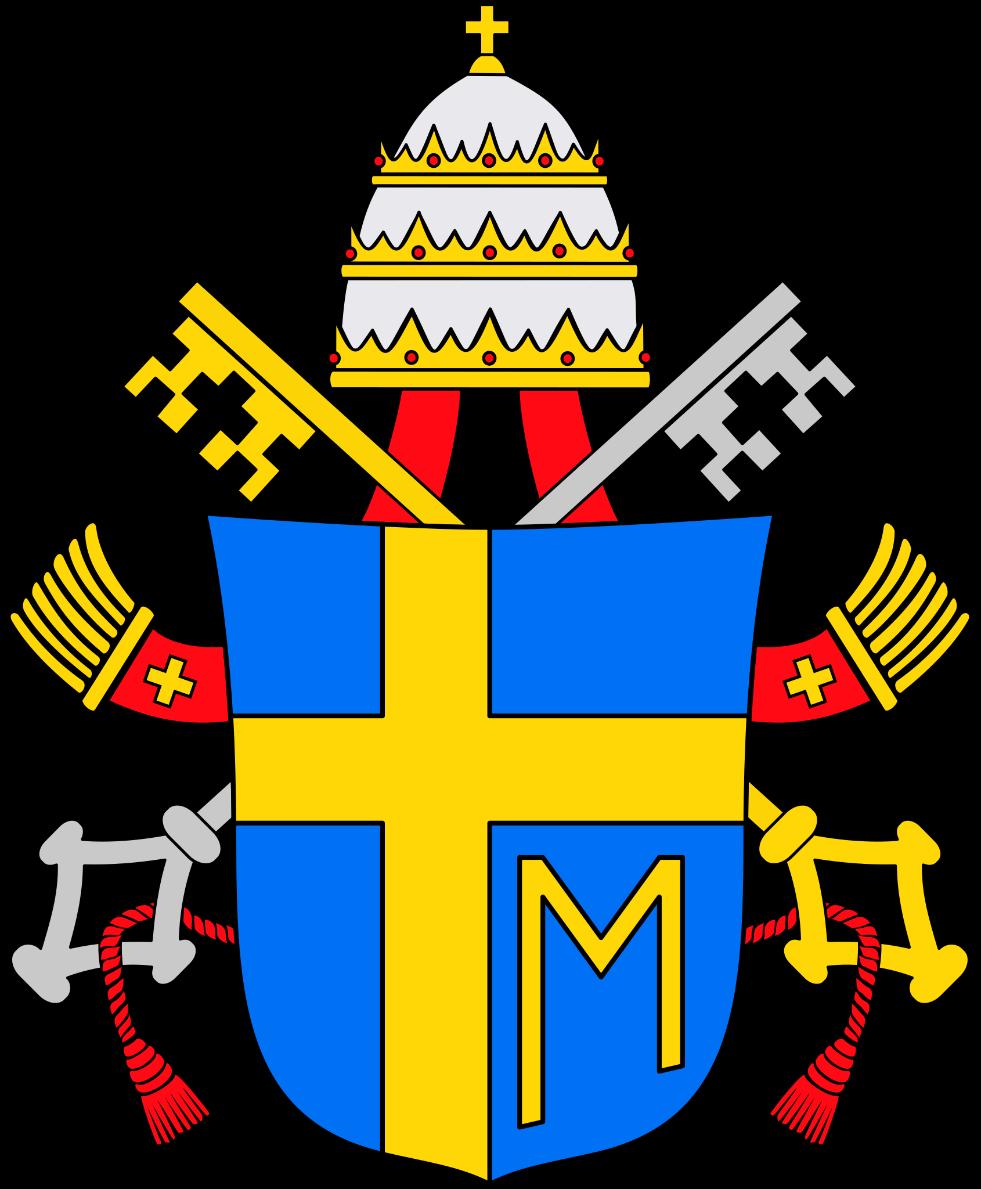
11 minute read
Rosarium Virginis Mariae (Rosary of the Virgin Mary
By Jo Briscoe
Advertisement
Within our worship in our Cathedral, we have a relatively new Group who pray the Rosary every Thursday morning at 11 o-clock in Our Lady’s Chapel. This is so special within our prayers that perhaps more of our Congregation might like to participate and receive all its known blessings.
St. Pius V noted in 1569 that “the Rosary or Psalter of the Blessed Virgin” is a “method of prayer” through which we “venerate Mary with the Angelic salutation repeated 150 times according to the number of David’s psalms, and before every set of ten Hail Mary’s we say the prayer of Our Lord with meditations that illustrate the entire life of the same Lord Jesus Christ”.
Pope Paul VI, in viewing the Holy Rosary as compendium of the Gospel message, states “The Rosary, though clearly Marian in character, is at heart a Christocentric prayer. In the sobriety of its elements, it has all the depth of the Gospel message in its entirety, of which it can be said to be a compendium.” Rosarium Virginis Mariae is an Apostolic Letter by Pope John Paul II, issued in 2002. In this letter he quotes Saint Louis de Montfort (who was a poor, wandering preacher whom Pope Clement XI eventually appointed a missionary apostolic, from when he spent the rest of his life preaching popular missions in Poitiers and Brittany. He also laid the foundation for a teaching order that came to be called Brothers of St. Gabriel. He left a considerable body of writing, all of it penned with an eye to pastoral ministry).
“Our entire perfection consists in being conformed, united and consecrated to Jesus Christ. Hence the most perfect of all devotions is undoubtedly that which conforms, unites and consecrates us most perfectly to Jesus Christ. Now, since Mary is of all creatures the one most conformed to Jesus Christ, it follows that among all devotions that which most consecrates and conforms a soul to our Lord is devotion to Mary, his Holy Mother, and that the more a soul is consecrated to her the more will it be consecrated to Jesus Christ.”
Pope John Paul II introduces his letter by stating: “The Rosary of the Virgin Mary, which gradually took form in the second millennium under the guidance of the Spirit of God, is a prayer loved by countless Saints and encouraged by the Magisterium. Simple yet profound, it still remains at the dawn of this third millennium, a prayer of great significance, destined to bring forth a harvest of holiness. It blends easily into the spiritual journey of the Christian life, which, after two thousand years, has lost none of the freshness of its beginnings and feels drawn by the Spirit of God to “set out into the deep” (duc in altum!) in order once more to proclaim, and even cry out, before the world that Jesus Christ is Lord and Saviour, “the way and the truth and the life” (Jn.14: 6), “the goal of human history and the point on which the desires of history and civilisation turn”.
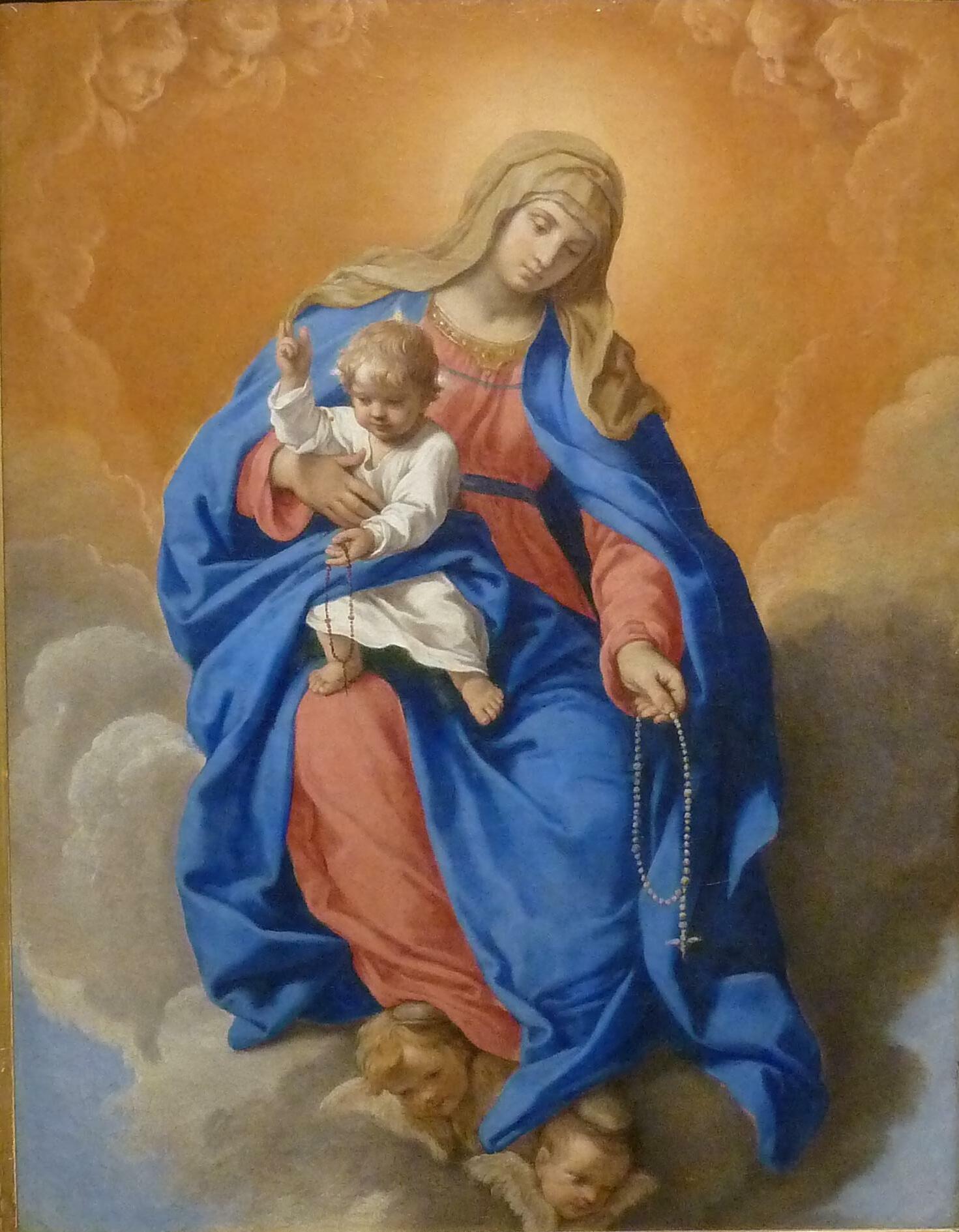
Our Lady of the Rosary by Simone Cantarini
The Rosary is an echo of the prayer of Mary, her perennial Magnificat for the work of the redemptive Incarnation which began in her virginal womb. With the Rosary, the Christian people sits at the school of Mary and is led to contemplate the beauty on the face of Christ and to experience the depths of his love. Through the Rosary the faithful receive abundant grace, as though from the very hands of the Mother of the Redeemer. Pope John Paul II also refers to Pope Leo XIII who in 1883 promulgated the Encyclical Supremi Apostolatus Officio – a document of great worth; the first of his many statements about this prayer, in which he proposed the Rosary as an effective spiritual weapon against the evils afflicting society. Pope John Paul II in his devotion to the Rosary, actually states: “I myself have often encouraged the frequent recitation of the Rosary. From my youthful years this prayer has held an important place in my spiritual life. I was powerfully reminded of this during my recent visit to Poland, and in particular at the Shrine of Kalwaria. The Rosary has accompanied me in moments of joy and in moments of difficulty. To it I have entrusted any number of concerns; in it I have always found comfort. Twenty-four years ago, scarcely two weeks after my election to the See of Peter, I frankly admitted: “The Rosary is my favourite
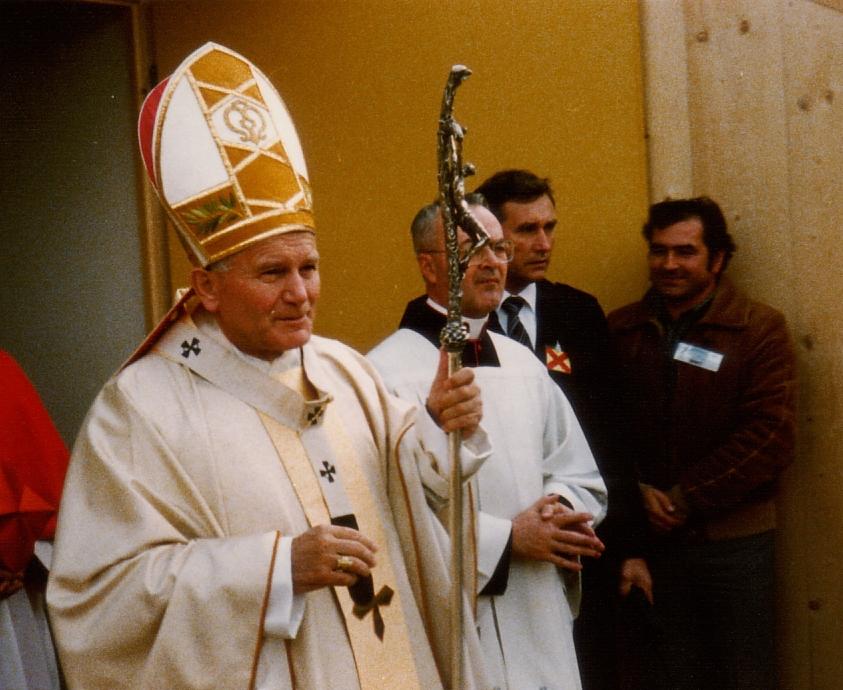
jPope John Paul II
prayer. A marvellous prayer! Marvellous in its simplicity and its depth. It can be said that the Rosary is, in some sense, a prayer-commentary on the final chapter of the Vatican II Constitution Lumen Gentium, a chapter which discusses the wondrous presence of the Mother of God in the mystery of Christ and the Church. Against the background of the words Ave Maria the principal events of the life of Jesus Christ pass before the eyes of the soul. They take shape in the complete series of the joyful, sorrowful and glorious mysteries, and they put us in living communion with Jesus through the heart of his Mother. At the same time, our heart can embrace in the decades of the Rosary all the events that make up the lives of individuals, families, nations, the Church and all mankind - our personal concerns and those of our neighbour, especially those who are closest to us, who are dearest to us. Thus the simple prayer of the Rosary marks the rhythm of human life. How many graces have I received in these years from the Blessed Virgin through the Rosary: Magnificat anima mea dominum!” - (My soul doth magnify the Lord – as spoken by Mary upon visiting her cousin Elizabeth upon her pregnancy). “I wish to lift up my thanks to the Lord in the words of his Most Holy Mother, under whose protection I placed my Petrine ministry: Totus Tuus! (Pope John Paul II’s apostolic motto: “Totally thine”). Origin of the Rosary: Since the Holy Rosary is composed, essentially and substantially, of the Prayer of Christ and the Angelic Salutation, i.e. the Our Father and the Hail Mary – and of meditation on the Mysteries of Jesus and Mary, it was without doubt the first prayer and the principal devotion of the faithful. It has been in use through the centuries, from the time of the Apostles and the Disciples down to the present. However, it was not until the year 1214 did the Church receive the Holy Rosary in the form and with the method according to which we pray it today. It was given to the Church by St. Dominic, who had received it from the Blessed Virgin as a means of converting the Albigensian (from the town of Albi in southern France, close to Toulouse) heretics and sinners. Inspired by the Holy Spirit and instructed by the Blessed Virgin and his own experience, St. Dominic preached the Holy Rosary for the rest of his life.
Pope John Paul II placed the Rosary at the very centre of Christian spirituality and called it “among the finest and most praiseworthy traditions of Christian contemplation”. Many Saints and Popes have emphasised the meditative and contemplative elements of the Rosary and provided specific teachings for how the Rosary should be prayed. For instance, the need for “focus, respect, reverence and purity of intention” during Rosary recitations and contemplations.
Basic structure: The Rosary is begun on the short strand: • The sign of the cross - on the Crucifix; • The prayer “O Lord, open my lips; O God, come to my aid; O Lord, make haste to help me - still on the Crucifix; • The Apostles’ Creed – still on the Crucifix; • The Lord’s Prayer – at the first large bead (for the intentions of the Pope and the needs of the Church); • The Hail Mary – on each of the next three beads (for the three theological virtues; faith, hope and charity); • The Glory Be – on the next large bead. The praying of the decades then follows, repeating this cycle for each mystery: • Announce the mystery; • The Lord’s Prayer – on the large bead; • The Hail Mary – on each of the ten adjacent small beads; • The Glory Be – on the space before the next large bead; To conclude: • The Salve Regina; • The Loreto Litany; • Any further intentions; • The sign of the Cross.
There are, of course, many variations and additions, according to the devotions of the people present.
Mysteries of the Rosary: Joyful Mysteries –1. The Annunciation: Humility 2. The Visitation: Love of Neighbour 3. The Nativity: Poverty – detachment from the things of the world, contempt of riches, love of the poor 4. The Presentation of Jesus at the Temple – Gift
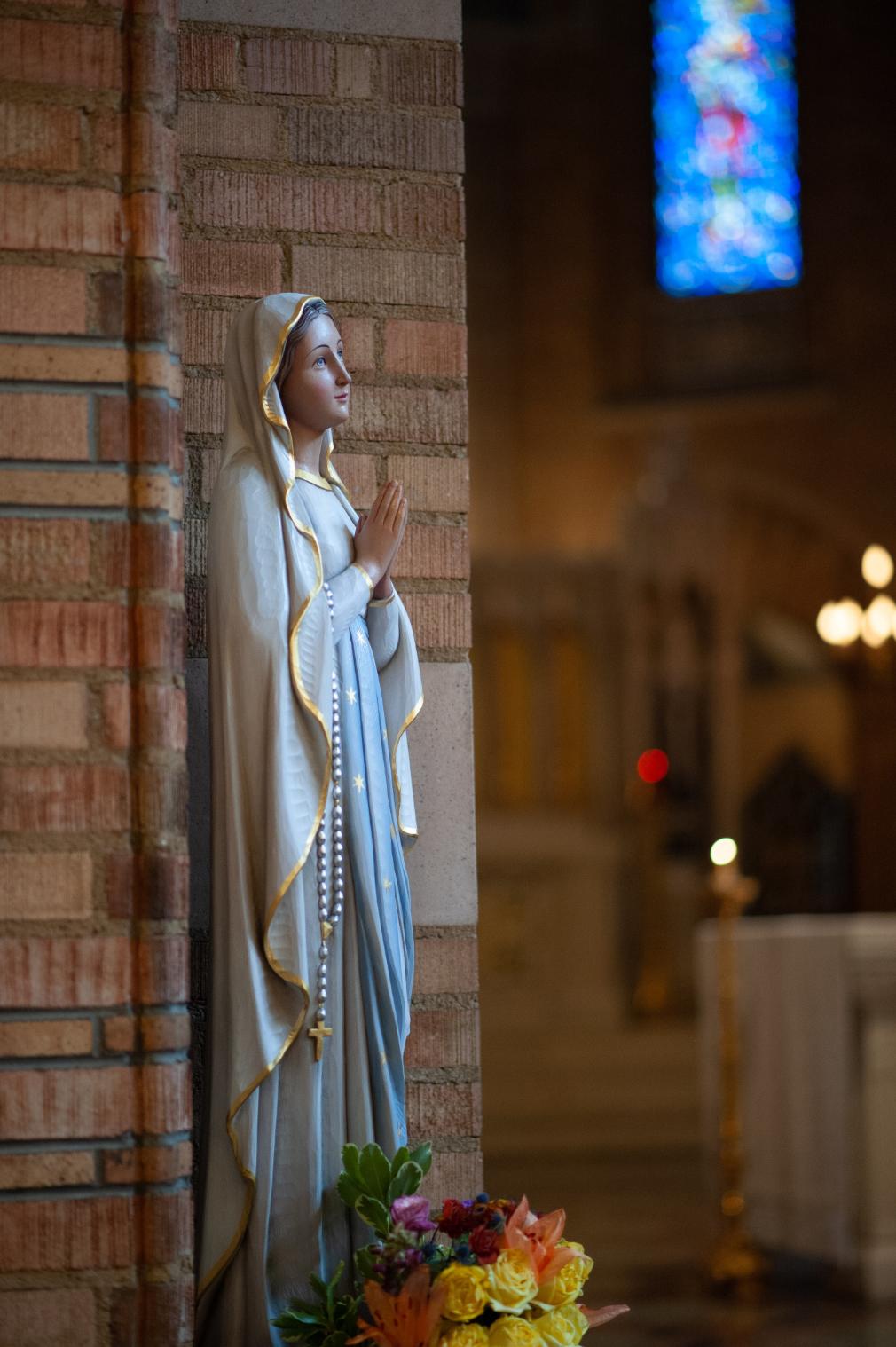
of wisdom and purity of mind and body (Obedience) 5. The Finding of Jesus in the Temple – True Conversion (piety, joy of finding Jesus)
Sorrowful Mysteries –1. The Agony in the Garden – Sorrow for Sin, Uniformity with the Will of God 2. The Scourging at the Pillar – Mortification (Purity) 3. The Crowning with Thorns – Contempt of the world (moral courage) 4. The Carrying of the Cross – Patience 5. The Crucifixion and Death of our Lord –Perseverance in faith, grace for a holy death (Forgiveness)
Glorious Mysteries –1. The Resurrection – Faith 2. The Ascension – Hope, Desire for ascension to Heaven 3. The Descent of the Holy Spirit – Love of God, Holy Wisdom to know the truth and share with everyone, Divine Charity, Worship of the Holy Spirit 4. The Assumption of Mary – Grace of a happy death and true devotion towards Mary 5. The Coronation of the Virgin – Perseverance and increase in virtue (Trust in Mary’s intercession). Pope John Paul II, in his apostolic letter in October 2002, recommended an additional set called the Luminous Mysteries (or the “Mysteries of Light”).
Luminous Mysteries (Light) 1. The Baptism of Jesus in the Jordan –Openness to the Holy Spirit, the Healer 2. The Wedding at Cana – To Jesus through Mary. The understanding of the ability to manifest through faith 3. Jesus’ Proclamation of the Kingdom of God –Trust in God (Call of Conversion to Messiah) 4. The Transfiguration – Desire for holiness 5. The Institution of the Eucharist – Adoration
“Blessed Rosary of Mary, sweet chain linking us to God” What has been said so far makes abundantly clear the richness of this traditional prayer, which has the simplicity of a popular devotion but also the theological depth of a prayer suited to those who feel the need for deeper contemplation. The Church has always attributed particular efficacy to this prayer, entrusting to the Rosary, to its choral recitation and to its constant practice, the most difficult problems.
At times when Christianity itself seemed under threat, its deliverance was attributed to the power of this prayer, and Our Lady of the Rosary was acclaimed as the one whose intercession brought salvation.’
“The Rosary, a treasure to be rediscovered Dear brothers and sisters! A prayer so easy and yet so rich truly deserves to be rediscovered by the Christian community. The grave challenges confronting the world lead us to think that only an intervention from on high, capable of guiding the hearts of those living in situations of conflict and those governing the destinies of nations, can give reason to hope for a brighter future. Let us do so, as a means of confirming the direction outlined here from which the pastoral plans of so many particular Churches have drawn inspiration as they look to the immediate future.
Devotion to the Rosary is one of the most notable features of popular Catholic spirituality. So, let us remember Pope John Paul II when he placed the Rosary at the very centre of Christian spirituality and called it “among the finest and most praiseworthy traditions of Christian contemplation.”
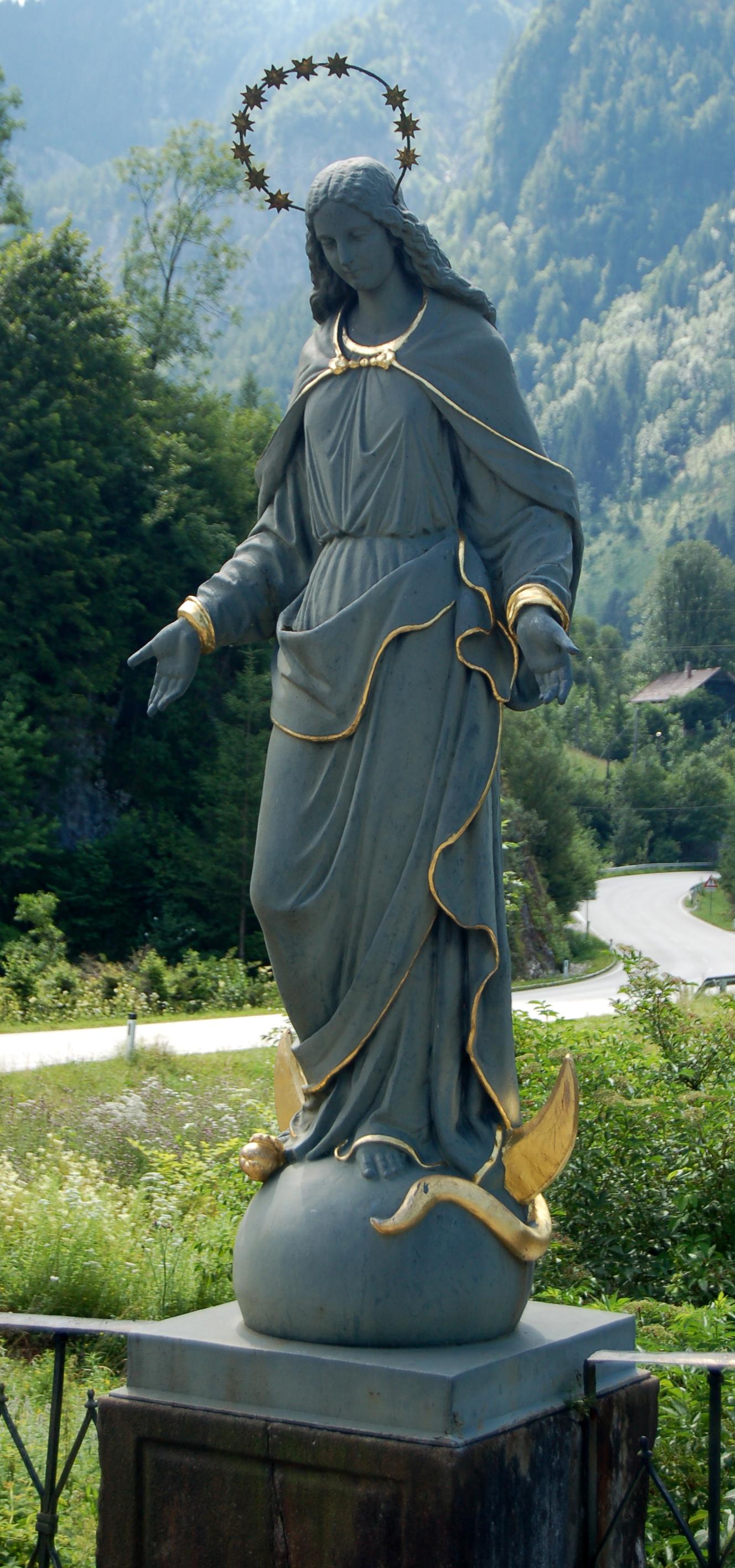
Töpperbrücke Virgin Mary statue
Pope John Paul II states “May this appeal of mine not go unheard! I repeat a supplication to the Queen of the Holy Rosary: ‘O Blessed Rosary of Mary, sweet chain which unites us to God, bond of love which unites us to the angels, tower of salvation against the assaults of Hell, safe port in our universal shipwreck, we will never abandon you. You will be our comfort in the hour of death: yours our final kiss as life ebbs away. And the last word from our lips will be your sweet name, O Queen of the Rosary of Pompei, O dearest Mother, O refuge of Sinners, O Sovereign Consoler of the Afflicted. May you be everywhere blessed, today and always, on earth and in heaven’.”
